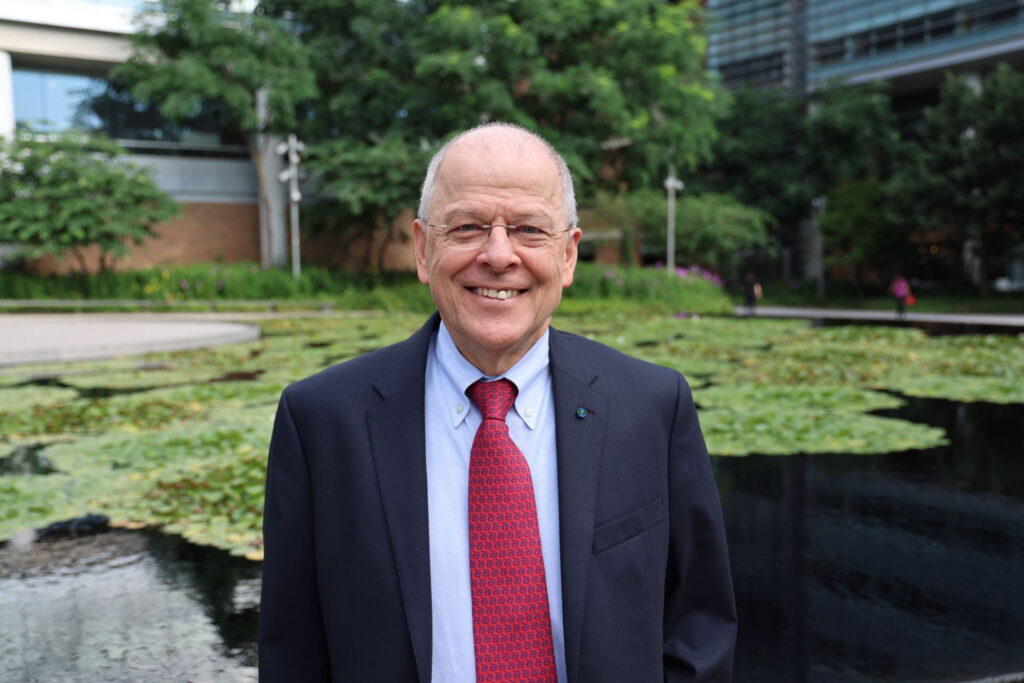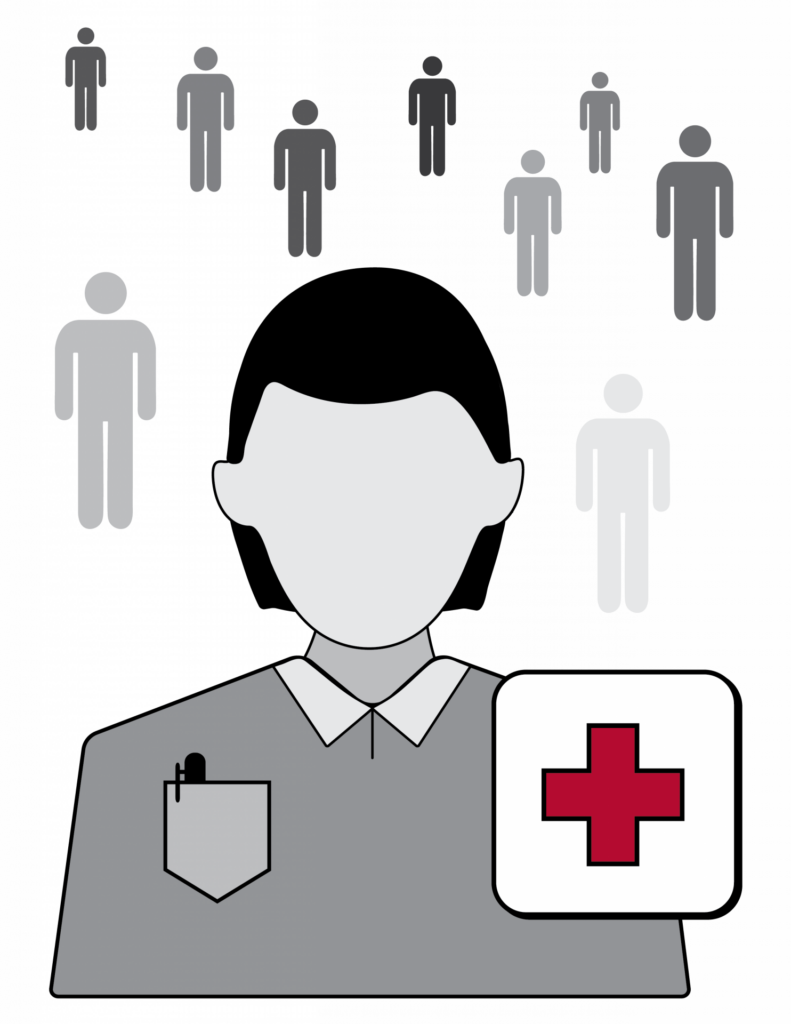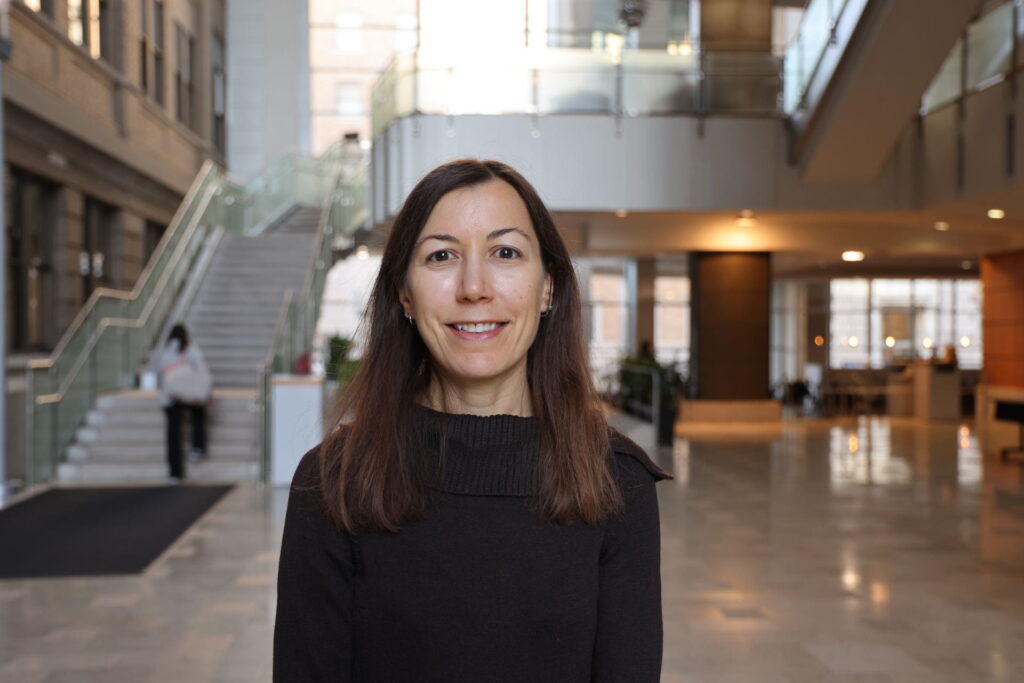

The Division of Public Health Sciences provides a platform for investigators across disciplines to collaborate on projects affecting clinical care and outcomes. Faculty are epidemiologists, statisticians, behavioral scientists, economists, health communication scientists and more who address a range of population health challenges. Their aim is to prevent cancer and other diseases, promote population health and improve quality and access to health care in the region. The division also offers a Master of Population Health Sciences (MPHS) degree program for training in population-based clinical outcomes research.
16
MPHS graduates
225
Publications
27
Faculty
21
MPHS students
159
Clinical research studies
$13,605,192
Research funding
Division of Public Health Sciences | 2021 Annual Report

Breast cancer is the most common cause of cancer among women in the United States, except for skin cancers. One in eight American women will develop breast cancer in their lifetime, and the American Cancer Society estimates over 43,000 women will die from breast cancer in 2021. Preventing breast cancer and understanding its risk factors are key areas of investigation for the Division of Public Health Sciences.

Researchers at Washington University School of Medicine in St. Louis have identified important associations between physical activity and cancer-related outcomes. Elizabeth Salerno, PhD, MPH, assistant professor of surgery in the Division of Public Health Sciences, is first author on two key studies examining physical activity and cancer, published this year.
Division of Public Health Sciences Highlights | 2021 Annual Report

Clinical
The Division of Public Health Sciences aims to improve the health equity of the St. Louis area by educating patients, addressing financial toxicity in health care and increasing access to cancer screening across the region. Professors of Surgery Bettina Drake, PhD, MPH, Aimee James, PhD, MPH, and Mary Politi, PhD, are leading collaborative projects to improve patient health. The Program for the Elimination of Cancer Disparities (PECaD) partners with community leaders to highlight the importance of cancer screenings. The division has developed a lung cancer screening toolkit for use by primary care providers in local communities. Ongoing projects examine the burden of financial toxicity in cancer treatment and other areas of patient care.

Research
Joy Jiang, PhD, assistant professor of surgery in the Division of Public Health Sciences, received a four-year $1.35 million MERIT award from the National Institutes of Health (NIH) for her project “Dynamic prediction incorporating time-varying covariates for the onset of breast cancer.” The project aims to improve breast cancer risk assessment by examining personalized, individual-specific data that may change over time. Jiang and Division Chief of Public Health Sciences Graham Colditz, MD, DrPH, developed a method of improving risk prediction based on mammogram data, supported by funding Colditz received from the Breast Cancer Research Foundation and published this year in Biostatistics.

Education
The division’s Master of Population Health Sciences degree program continues to benefit surgical trainees interested in pursuing public health research during their lab years. General Surgery lab resident Brendan Heiden, MD, MPHS, initiated lung transplantation research during a course studying risk prediction, offered by Associate Professor of Surgery Yikyung Park, ScD. This research has led to multiple publications and presentations, as well as the development of an online calculator, in collaboration with thoracic surgeon Varun Puri, MD, MSCI, to help physicians rapidly determine if a donor lung is likely to be eligible for transplant.

Reducing Breast Cancer Risk
Breast cancer is the most common cause of cancer among women in the United States, except for skin cancers. One in eight American women will develop breast cancer in their lifetime, and the American Cancer Society estimates over 43,000 women will die from breast cancer in 2021. Preventing breast cancer and understanding its risk factors are key areas of investigation for the Division of Public Health Sciences.
About 25% of breast cancer cases occur in women under 50. Breast density—the relative amount of glandular, connective and fat tissue as seen on a mammogram—is one of the strongest risk factors for breast cancer, especially in premenopausal women. Associate Professor of Surgery Adetunji Toriola, MD, PhD, is principal investigator on an R01 grant from the National Institutes of Health (NIH) to study the metabolomics of mammographic breast density.
“A decrease in breast density leads to a reduction in breast cancer incidence,” says Toriola. “Nevertheless, the molecular basis of mammographic breast density and the mechanisms through which dense breast increases breast cancer risk are poorly understood.”
Toriola aims to leverage state-of-the-art metabolomics research to uncover the molecular mechanisms, biological pathways and novel actionable biomarkers associated with breast density in premenopausal women.
Decreasing breast density is the focus of a new Phase II clinical trial led by Toriola at Washington University School of Medicine in St. Louis. The trial, supported by a $3 million grant from the National Cancer Institute of the NIH, will investigate the use of an osteoporosis drug for its potential to reduce breast density. Currently, the only preventive therapy for these high-risk women is the chemotherapy drug tamoxifen, which can have serious side effects for some patients. This new therapy could help reduce the risk of breast cancer with fewer undesirable side effects.
“The safety and effectiveness of this drug is well established in its use as an FDA-approved therapy to prevent osteoporosis and bone fractures in older women,” says Toriola, principal investigator on this prevention trial. “It is given as an injection under the skin in the upper arm, upper thigh or stomach area, but it only needs to be administered every six months, rather than daily like tamoxifen. So we hope that denosumab will provide an additional prevention option for women with dense breasts who are at high risk of developing breast cancer.”
In addition to leading research in breast cancer prevention, faculty in the Division of Public Health Sciences promotes mammography screening and patient education with community outreach programs through partnerships with Siteman Cancer Center and community partners across the St. Louis area.

Physical Activity and Cancer Survival
Researchers at Washington University School of Medicine in St. Louis have identified important associations between physical activity and cancer-related outcomes. Elizabeth Salerno, PhD, MPH, assistant professor of surgery in the Division of Public Health Sciences, is first author on two key studies examining physical activity and cancer, published this year.
The first study, published in Cancer Epidemiology, Biomarkers & Prevention, a journal of the American Association for Cancer Research, found an association between slow walking pace and an increased risk of death among cancer survivors. The slowest walking pace was linked to mortality among survivors of nine cancer types, including breast, colon, melanoma, Non- Hodgkin lymphoma, oral, prostate, rectal, respiratory and urinary cancers. Cancer survivors with mobility disability were at more than five times greater risk of death than individuals with no cancer diagnosis or disability. The next steps in this research include identifying the underlying reasons for this association and developing potential interventions to target walking pace after cancer.
“Cancer survivors are living longer than ever –and that’s good news,” says Salerno, who conducted this research while a postdoctoral researcher at the National Cancer Institute (NCI). “But it’s important to improve our understanding of how the diagnosis and treatment of a broad range of cancers may affect walking pace during survivorship —a potentially modifiable risk factor —which could lead to new treatment and rehabilitation strategies to improve the health of these patients.”
The relationship between physical activity and cognitive function after chemotherapy is the focus of the second study, published in the Journal of Clinical Oncology. Researchers at the School of Medicine, in collaboration with Rochester Medical Center and the NCI, found a strong association between high levels of physical activity and the ability to maintain cognitive function among breast cancer patients treated with chemotherapy.
“Cognitive decline related to cancer treatment is a growing clinical concern,” says Salerno. “Some patients with cancer experience memory lapses, difficulty concentrating or trouble finding the right word to finish a sentence. Knowing the detrimental effects of chemotherapy on cognitive function, we wanted to understand the dynamic relationships between physical activity and cognition before, during and after chemotherapy to hopefully inform early, cost-effective prevention strategies to promote health in these patients. Our findings suggest that maintaining higher levels of physical activity may indeed be important for protecting cognition in patients with breast cancer undergoing chemotherapy.”
This research lays the groundwork for future clinical trials to investigate whether exercise can prevent what is commonly referred to as “chemo brain,” a decline in cognitive function many breast cancer patients experience.
“These findings contribute to the growing body of evidence highlighting the importance of promoting physical activity as early as possible across the continuum of cancer care,” says Salerno.